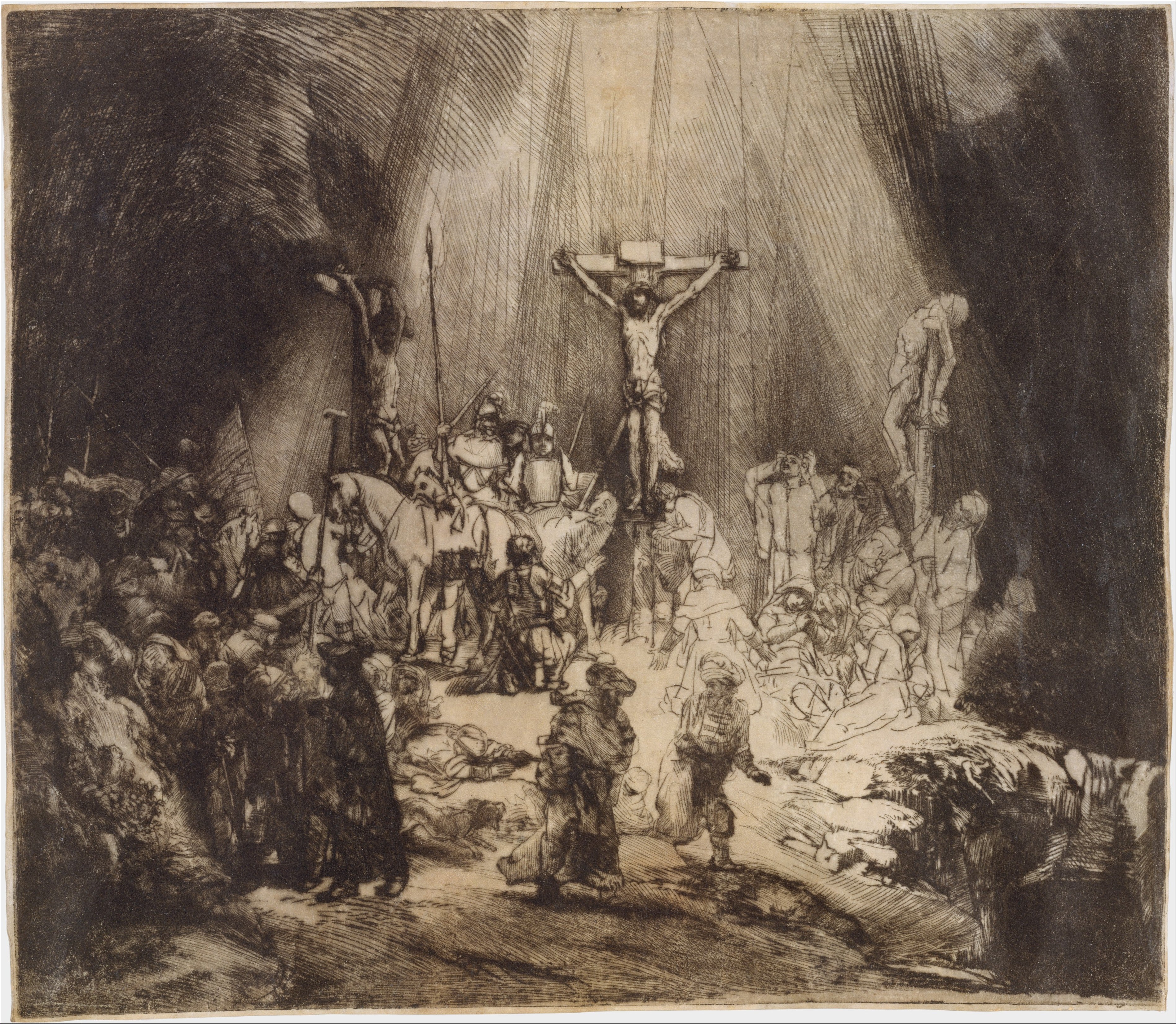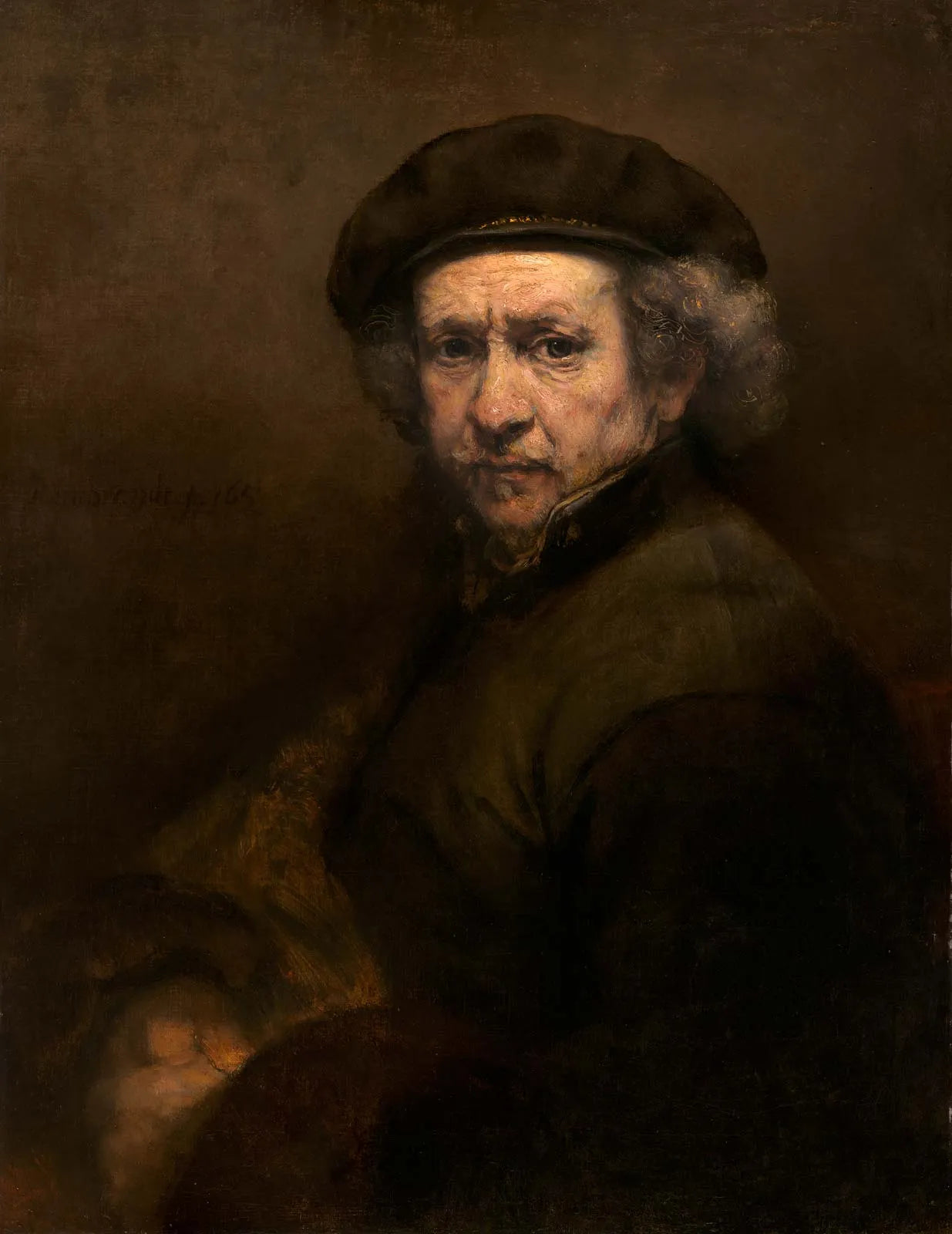
Christ Crucified between the Two Thieves: The Three Crosses
"The Three Crosses" stands among Rembrandt van Rijn’s most extraordinary achievements—not only as a printmaker, but as a visual storyteller of profound spiritual intensity. Created entirely in drypoint, this print showcases the full maturity of Rembrandt’s graphic art. By forgoing etching or engraving and relying solely on drypoint, he was able to exploit the soft, velvety burr produced by the drypoint needle—a technique that gave the image a deeply textured, atmospheric quality unmatched in his other prints.
In this impression, Rembrandt has used creative inking to transform the copperplate into a kind of printing palette. Rather than wiping the plate clean, he deliberately left a residue of ink in certain areas, resulting in a shadowy veil that obscures some of the figures gathered near the base of the cross on the right. A denser layer of ink almost entirely submerges the bushes and background at the far right, creating a dramatic chiaroscuro that heightens the sense of sorrow and mystery surrounding the Crucifixion scene. Through this manipulation of ink, Rembrandt made each impression an individual act of expression—less like printing and more like painting.
What makes this impression particularly remarkable is that it is printed on vellum—a refined, less absorbent surface that retains ink on its surface and infuses the image with a luminous, warm glow. The texture of the vellum softens the lines, enhances tonal richness, and imparts a subtle depth to the composition, enriching its emotional resonance. In contrast to paper, vellum allows the image to hover more gently, as if lit from within.
In The Three Crosses, Rembrandt fuses technique and theology, material and meaning. Each impression is unique—a variation not just in form, but in feeling. The print becomes a dynamic meditation on suffering, salvation, and the power of light to break through darkness. In this masterwork, Rembrandt achieves what few artists ever have: the ability to create, within the bounds of a reproducible medium, an artwork that feels profoundly singular and alive.
Choose options

Christ Crucified between the Two Thieves: The Three Crosses
About Artist

Rembrandt Harmenszoon van Rijn
